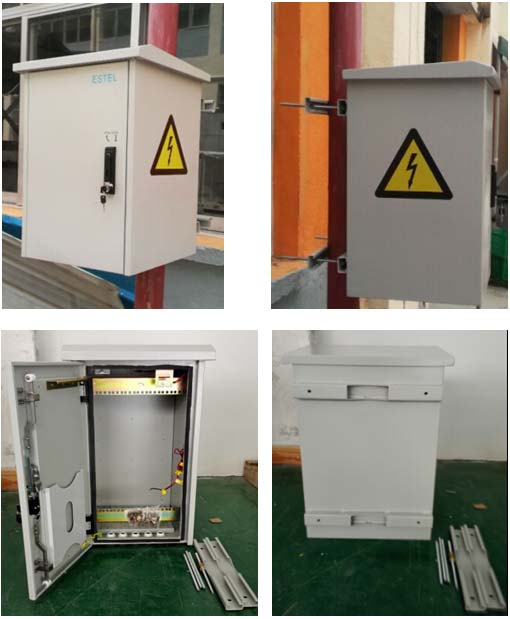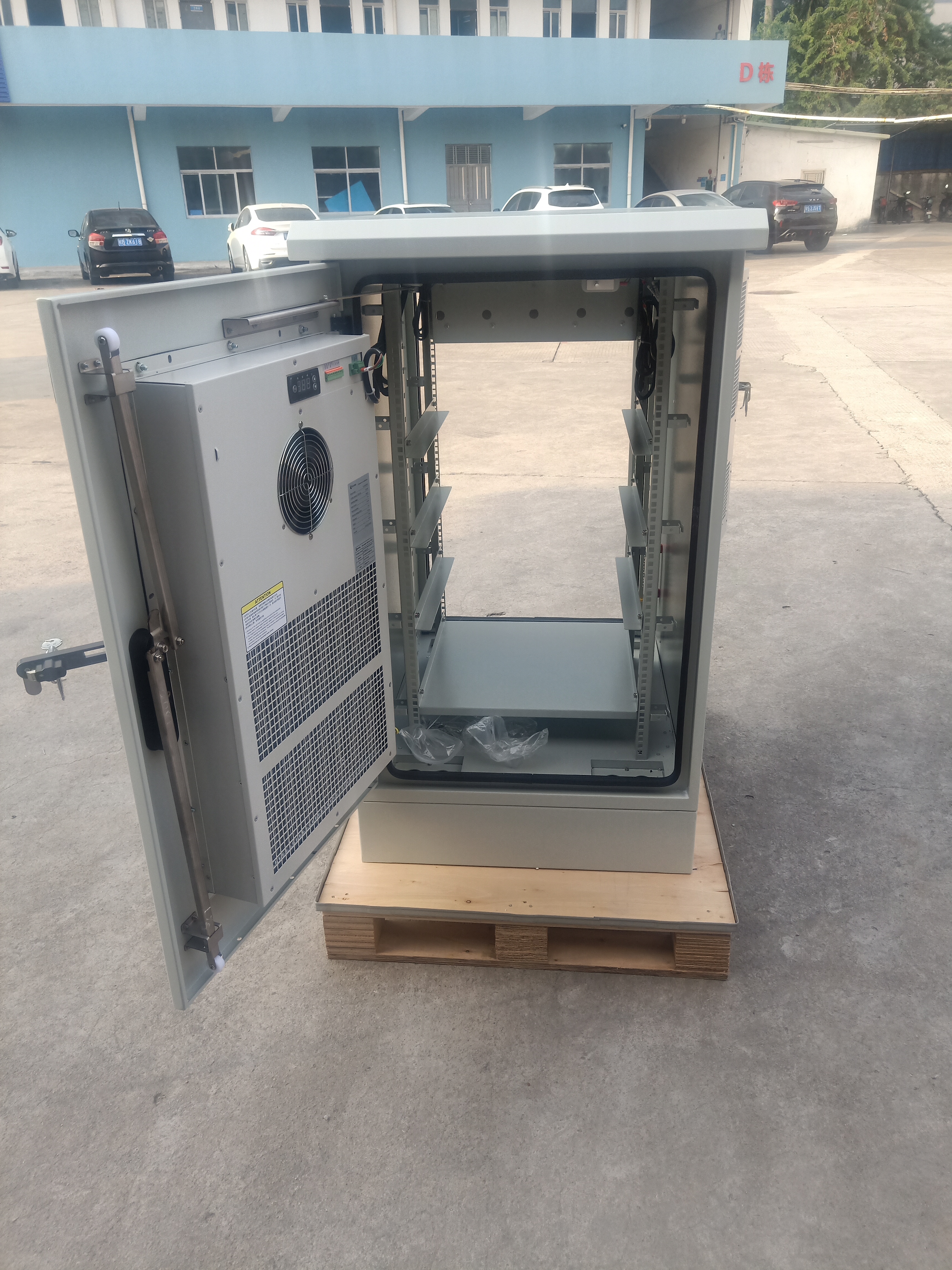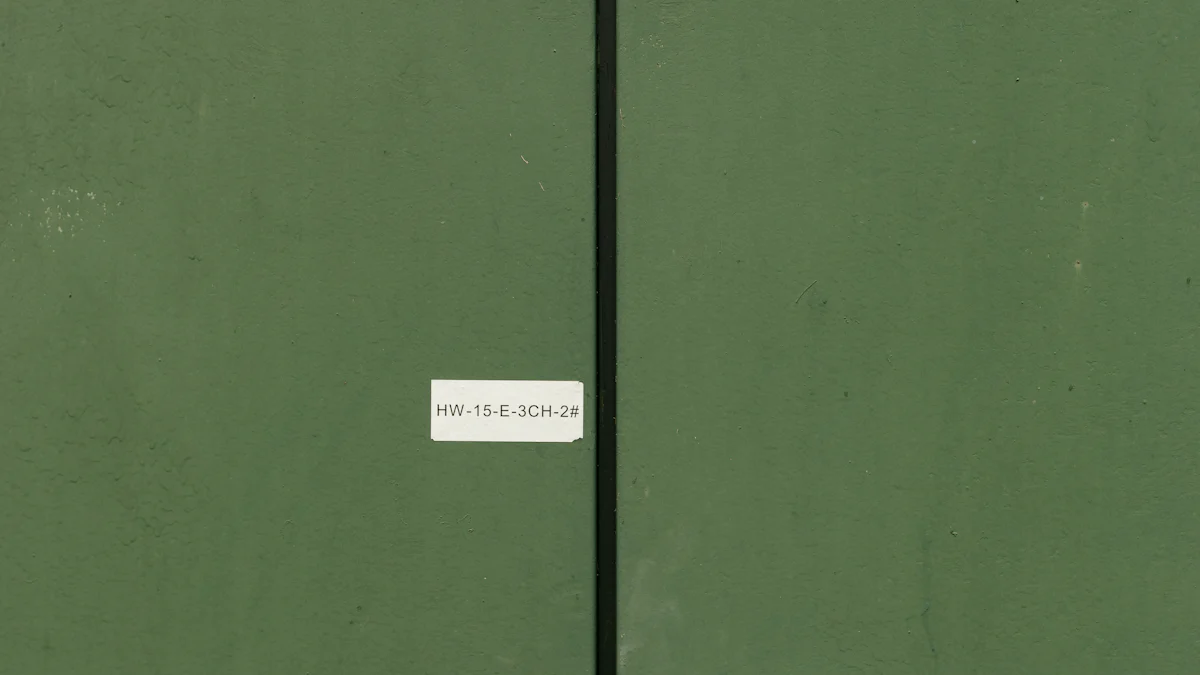The Ultimate Guide to Outdoor Communication Cabinets for Commercial Use

Outdoor communication cabinets play a vital role in safeguarding critical equipment in commercial environments. These cabinets shield sensitive components from harsh weather conditions, including moisture, dust, and temperature extremes. NEMA and IP ratings help determine their ability to resist environmental factors, ensuring durability and reliability. Features like thermal regulation systems, such as fans and insulation, maintain optimal operating temperatures, preventing thermal stress. In coastal regions, salt-resistant materials like stainless steel are essential, while waterproof and dustproof designs protect against rain and debris. Properly designed cabinets enhance equipment longevity and ensure uninterrupted operations in demanding outdoor settings.
Key Takeaways
Outdoor cabinets shield equipment from bad weather, keeping them safe.
Pick cabinets with the right NEMA and IP ratings to block dust, water, and rust.
Good cooling systems stop overheating and keep electronics working well.
Organized cables improve performance and make repairs easier, avoiding damage.
Custom designs let businesses adjust cabinets for their needs, ensuring they last and work efficiently.
Key Features of an Outdoor Communication Cabinet

Protection Against Environmental Elements
Outdoor communication cabinets must withstand harsh environmental conditions to protect sensitive equipment. Materials like galvanized steel and aluminum provide natural rust resistance, while composite materials offer excellent corrosion protection. Stainless steel is ideal for coastal areas due to its durability against salt exposure. UV-resistant coatings prevent sunlight degradation, ensuring long-term reliability.
To meet industry standards, high-quality cabinets often feature IP55 protection ratings, making them both dustproof and waterproof. Compliance with NEMA standards or IEC IP codes further enhances their resilience. For example, cabinets in high-humidity regions benefit from composite materials, while those in extreme temperatures require thermal insulation properties. These features ensure the cabinet's ability to safeguard equipment in diverse outdoor settings.
Security and Anti-Tampering Features
Security is a critical aspect of any outdoor communication cabinet. Advanced anti-tampering technologies, such as anti-tamper sensors and intrusion detection systems, help detect unauthorized access attempts. Access control mechanisms restrict entry to authorized personnel, while robust construction resists physical attacks and vandalism.
Modern cabinets integrate intelligent technologies for real-time tracking of enclosure conditions. Features like anti-drill plates, hardened locks, and reinforced structures minimize the risk of theft or damage. These measures ensure that sensitive equipment remains secure, even in high-risk areas.
Thermal Management Systems
Effective thermal management is essential for maintaining optimal equipment performance. Outdoor communication cabinets use temperature regulation mechanisms, such as fans, ventilation systems, and insulation, to prevent overheating or extreme cold. Thermoelectric cooler assemblies provide both cooling and heating, ensuring a stable environment for sensitive electronics.
Passive cooling systems, which rely on natural convection and thermal radiation, are ideal for areas without electricity. These systems protect equipment from thermal stress, reducing the risk of premature failure and ensuring consistent performance. By maintaining an ideal operating temperature range, thermal management systems enhance the reliability and longevity of the equipment housed within the cabinet.
Cable Management and Power Solutions
Efficient cable management and reliable power solutions are essential for the functionality of any outdoor communication cabinet. Properly organized cables not only enhance performance but also simplify maintenance and reduce the risk of damage. Cabinets designed with dedicated cable routing systems prevent tangling and ensure a clean, professional appearance.
Key practices for effective cable management include:
Using labeled components to facilitate quick identification during maintenance.
Incorporating modular layouts for easy upgrades or replacements.
Evaluating entry points and internal routing to ensure smooth cable flow.
Allocating adequate space within the cabinet for installation and maintenance.
In modern applications, such as 5G infrastructure, efficient cable organization becomes even more critical. Poorly managed cables can lead to performance issues and increased downtime. A well-designed cabinet with proper cable routing systems ensures reliability and long-term operational efficiency.
Power solutions also play a vital role in maintaining uninterrupted operations. Cabinets often feature integrated power distribution units (PDUs) to manage electrical connections safely. Surge protection mechanisms safeguard sensitive equipment from voltage spikes, while backup power options, such as battery systems, provide resilience during outages. These features ensure that the cabinet supports continuous operation, even in challenging conditions.
Material Durability and Construction Standards
The durability of an outdoor communication cabinet depends on its materials and adherence to construction standards. High-quality materials, such as galvanized steel, aluminum, and stainless steel, resist corrosion and withstand harsh environmental conditions. Cabinets in coastal areas benefit from salt-resistant materials, while those in extreme climates require thermal insulation to maintain internal stability.
Construction standards, such as NEMA ratings, provide a benchmark for cabinet performance. The table below highlights common NEMA ratings:
NEMA Rating | Description |
|---|---|
NEMA 3 | Protection against windblown dust, rain, and sleet. |
NEMA 4 | Offers protection against splashing and hose-directed water. |
NEMA 4X | Adds corrosion resistance, suitable for harsh environments. |
In addition to material selection, structural design plays a crucial role in durability. Cabinets must offer sufficient space for installation and maintenance while incorporating robust locks and anti-theft measures. Waterproof and dustproof grades, verified through NEMA or IEC IP standards, further enhance the cabinet's ability to protect sensitive equipment.
By combining durable materials with rigorous construction standards, outdoor communication cabinets deliver long-lasting performance and reliability in demanding environments.
How to Choose the Right Outdoor Communication Cabinet
Assessing Size and Capacity Requirements
Selecting the correct size and capacity for an outdoor communication cabinet is essential for ensuring functionality and future scalability. The cabinet must accommodate all current equipment while leaving room for additional components. Evaluating both present and future needs helps avoid costly replacements or upgrades.
Proper sizing ensures that equipment fits comfortably without overcrowding, which can hinder cooling and maintenance.
The following table outlines key factors to consider:
Factor | Description |
|---|---|
Size and capacity | Choose the cabinet size based on the equipment you need to house. |
Future expansion needs | Ensure the cabinet can support additional equipment for future upgrades. |
Additionally, the cabinet's height, width, and depth should provide sufficient space for cooling and ventilation. This prevents overheating and ensures optimal performance of sensitive electronics.
Evaluating Compliance with Industry Standards
Compliance with industry standards guarantees that the cabinet meets safety and performance benchmarks. Two critical standards to consider are:
NEMA Ratings: These define protection levels against environmental factors such as dust, water, and corrosion.
IP Ratings: These classify the cabinet's resistance to solids and liquids, ensuring suitability for outdoor conditions.
Buyers should confirm the cabinet's waterproof and dustproof grades by verifying its NEMA or IEC IP ratings. For example, a cabinet with an IP55 rating offers protection against limited dust ingress and water jets, making it ideal for outdoor use. Adhering to these standards ensures the cabinet's durability and reliability in challenging environments.
Comparing Pre-Assembled vs. Modular Designs
When choosing an outdoor communication cabinet, deciding between pre-assembled and modular designs is crucial. Pre-assembled cabinets arrive ready for immediate installation, saving time and effort. These are ideal for projects with tight deadlines or limited technical expertise.
Modular designs, on the other hand, offer greater flexibility. They allow users to customize the cabinet's layout and features to meet specific requirements. This option is particularly beneficial for complex installations or when future upgrades are anticipated.
Modular cabinets provide adaptability, making them a preferred choice for dynamic commercial environments.
Weighing the benefits of each design helps businesses select a cabinet that aligns with their operational needs and long-term goals.
Considering Customization Options for Specific Needs
Customization plays a pivotal role in ensuring that an outdoor communication cabinet meets specific commercial requirements. Businesses often operate in diverse environments, making tailored solutions essential for optimal performance and longevity.
Several customization options are available to address unique needs:
Structural Design: Cabinets can be modified to include additional space for equipment installation and maintenance. Enhanced cable management systems ensure organized layouts and reduce operational inefficiencies.
Material Selection: Environmental factors dictate material choices. Stainless steel suits coastal areas due to its corrosion resistance, while composite materials excel in high-humidity regions.
Safety Features: Custom locks, anti-theft mechanisms, and reinforced structures enhance security. Waterproof and dustproof ratings ensure protection against environmental hazards.
Temperature Control Management: Built-in heaters, dehumidifiers, and advanced heat dissipation systems maintain stable internal conditions in extreme climates.
Power and Network Requirements: Cabinets can integrate uninterruptible power supplies (UPS) for areas with unstable electricity. Additional network connectivity options ensure seamless communication.
Budget Considerations: Customization allows businesses to balance upfront costs with long-term durability and maintenance expenses.
Manufacturer Support: Reputable manufacturers offer warranties and support services, ensuring reliability and peace of mind.
Tailored solutions provide flexibility and adaptability, enabling businesses to address operational challenges effectively. For instance, a cabinet designed for a desert environment may include advanced cooling systems, while one for urban settings might prioritize anti-vandalism features. Customization ensures that the cabinet aligns with the specific demands of its location and application.
Investing in a customized outdoor communication cabinet enhances operational efficiency and protects critical equipment. Businesses benefit from solutions that cater to their unique requirements, ensuring long-term reliability and performance.
Comparing Outdoor Communication Cabinet Options

Evaluating Features and Specifications
Outdoor communication cabinets vary significantly in their features and specifications. Buyers should carefully assess these differences to ensure the chosen cabinet meets their operational needs. Key factors include:
NEMA Ratings: Cabinets come with different NEMA ratings, such as NEMA 3, NEMA 4, and NEMA 4X. These ratings indicate the level of protection against environmental factors like dust, rain, and corrosion.
IP Ratings: IP ratings classify the cabinet's resistance to solids and liquids. For example, an IP55 rating ensures limited dust ingress and protection against low-pressure water jets.
Compliance with Industry Standards: Leading brands design cabinets to meet local building codes and safety standards, ensuring reliability and safety.
By comparing these specifications, businesses can identify cabinets that align with their environmental and operational requirements.
Balancing Cost, Quality, and Long-Term Value
Balancing cost, quality, and long-term value is essential when selecting an outdoor communication cabinet. Businesses should evaluate several factors to make an informed decision:
Environmental adaptability and safety features.
Temperature management systems to maintain equipment performance.
Power and network requirements for uninterrupted operations.
Upfront costs versus long-term maintenance and durability.
Vendor reputation, including warranties and technical support.
Choosing a cabinet that offers cost-effectiveness without compromising quality ensures a better return on investment. A durable cabinet with reliable vendor support minimizes future expenses and operational disruptions.
Importance of Warranties and Customer Reviews
Warranties and customer reviews play a critical role in the decision-making process. A strong warranty provides assurance against potential issues, reducing the risk of unexpected costs. Brands with good reputations often offer reliable after-sales service and technical support.
Customer reviews provide valuable insights into real-world performance and user satisfaction. Positive feedback highlights the cabinet's strengths, while negative reviews reveal potential drawbacks. Businesses should prioritize cabinets with favorable reviews and comprehensive warranties to ensure long-term reliability.
Expert Tips for Selecting Outdoor Communication Cabinets
Consulting with Industry Professionals
Consulting with industry professionals provides valuable insights when selecting an outdoor communication cabinet. Experts can identify potential challenges and recommend solutions tailored to specific operational needs. They often highlight common mistakes businesses make, such as choosing cabinets with insufficient space for equipment or poor cable management. Inappropriate material selection, such as failing to use salt-resistant materials in coastal areas, is another frequent error. Neglecting physical security measures, inadequate waterproofing, and ineffective temperature control systems also pose risks.
Professionals emphasize the importance of aligning cabinet features with environmental conditions. For example, they recommend cabinets with built-in heaters and dehumidifiers for cold or humid climates. Businesses benefit from expert advice on selecting cabinets that balance cost-effectiveness with long-term durability, ensuring reliable performance in demanding environments.
Questions to Ask Suppliers and Manufacturers
Asking the right questions ensures that the selected cabinet meets operational and environmental requirements. Key questions include:
Does the cabinet design provide adequate space for equipment installation and maintenance?
Are the materials suitable for the specific environment, such as stainless steel for coastal areas?
What safety features, like locks and anti-theft measures, are included?
How does the cabinet manage temperature changes, and are heaters or dehumidifiers available for extreme conditions?
Does the cabinet support necessary power and network connections, such as UPS and Ethernet ports?
What is the warranty coverage, and what support services does the manufacturer offer?
These questions help businesses evaluate the cabinet's structural design, material quality, and overall functionality. They also ensure that the cabinet aligns with industry standards and operational goals.
Planning for Future Expansion and Upgrades
Planning for future expansion is essential when selecting an outdoor communication cabinet. Proper sizing ensures that all current equipment fits comfortably while leaving room for growth. Cabinets designed with scalability in mind reduce the need for costly replacements or additional installations.
Businesses should prioritize cabinets with modular designs that allow for easy upgrades. Flexible layouts accommodate new technologies, ensuring the cabinet remains relevant as operational needs evolve. By considering future requirements during the selection process, businesses can maximize the cabinet's long-term value and efficiency.
Selecting the right outdoor communication cabinet requires careful consideration of several critical factors. These include waterproofing, security, cooling systems, cable management, and compliance with industry standards. Durable materials like stainless steel or aluminum, combined with weather-resistant designs, ensure long-term reliability in harsh environments. Customizable features, such as modular layouts and advanced temperature control, allow businesses to address unique operational needs effectively.
Investing in a high-quality cabinet enhances equipment protection and operational efficiency. Consulting with industry professionals and evaluating future scalability ensures the solution remains relevant over time. Prioritizing these aspects guarantees a reliable and efficient communication infrastructure.
FAQ
What is the purpose of an outdoor communication cabinet?
An outdoor communication cabinet protects sensitive equipment from environmental factors like dust, water, and temperature extremes. It ensures operational efficiency, enhances equipment longevity, and provides secure housing for critical components in commercial settings.
How do I determine the right size for my cabinet?
Evaluate the equipment's dimensions and future expansion needs. Ensure the cabinet offers adequate space for cooling, cable management, and maintenance. Proper sizing prevents overcrowding and supports long-term scalability.
Are modular cabinets better than pre-assembled ones?
Modular cabinets provide flexibility for customization and future upgrades. Pre-assembled cabinets save time and suit projects with tight deadlines. The choice depends on operational requirements and long-term goals.
What materials are best for outdoor cabinets in coastal areas?
Stainless steel is ideal for coastal environments due to its corrosion resistance. Composite materials also perform well in high-humidity regions. Material selection should align with environmental conditions.
Why are NEMA and IP ratings important?
NEMA and IP ratings indicate a cabinet's resistance to dust, water, and other environmental factors. These standards ensure the cabinet's durability and suitability for outdoor use, protecting sensitive equipment effectively.
See Also
5 Reasons Outdoor Communication Cabinets Are Worth It
Protecting Outdoor Communication Cabinets with Smart Maintenance
What ESTEL Cabinet Cooling Solutions Offer for Industrial Applications
CALL US DIRECTLY
86-13752765943
3A-8, SHUIWAN 1979 SQUARE (PHASE II), NO.111, TAIZI ROAD,SHUIWAN COMMUNITY, ZHAOSHANG STREET, NANSHAN DISTRICT, SHENZHEN, GUANGDONG, CHINA

